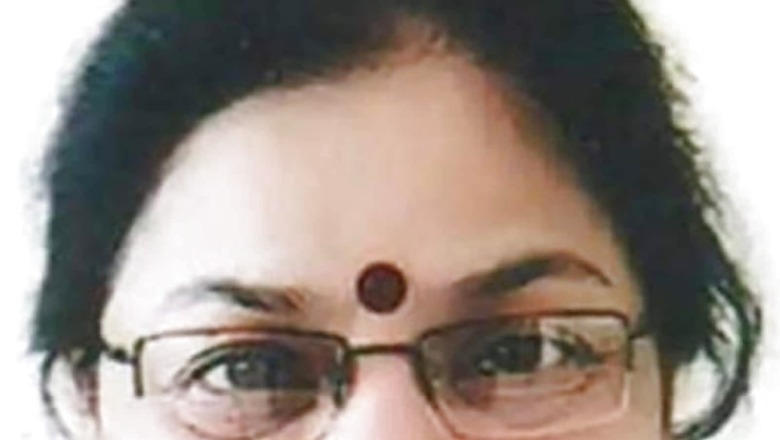
views
A year and a half after the Coronavirus pandemic wrecked our collective lives, our society has been grappling with fear and insecurity. As a result, we have seen misinformation spread like wildfire, and many resorting to bizarre and incorrect methods of dealing with the virus. With this column, which will be published every Sunday, we aim to address any health or vaccine-related question our readers might have about the coronavirus pandemic.
In this week’s column, Dr Surekha Kishore, Executive Director of AIIMS Gorakhpur addresses concerns about taking flu shots and COVID-19 vaccines together. She further discusses the role community medicine played in tackling the COVID-19 pandemic.
How does the antiviral pill work that claims to manage COVID 19 and reduce chances of hospitalization and deaths?
2-Deoxy-D-Glucose (2-DG) is developed and manufactured in India to manage COVID-19. It is an analogue of glucose, which has emerged as an important COVID-19 drug due to its effect on a glycolytic pathway, anti-inflammatory action, and interaction with viral proteins. COVID-19 virus depends on glycolysis (breakdown of glucose by cells) for their energy requirements. By inhibiting glycolysis, it disrupts viral replication. The findings of clinical trials suggest this drug reduces the requirement of supplemental oxygen and supports faster recovery of hospitalized COVID-19 patients. Our regulatory authority (CDSCO) has granted the “Emergency Use Authorisation” as an adjuvant treatment in moderate to severe COVID-19 patients in a hospital setting.
How has the medical training for doctors changed since the pandemic? What are the new things they are being taught in the light of the global health issue?
On the positive side, this pandemic has opened a way for new teaching and training methods. E-learning tools have ensured the continuity and safe delivery of medical education up to a certain extent. The widespread use of smartphones and laptops has made it possible to deliver interactive lectures through webcasts, podcasts, and videoconferencing. Their role was undermined in the pre-COVID era. Telemedicine, teleconsultation, online discussion of cases, virtual examination of patients under the supervision of faculty have offered some solutions to the problems of medical education.
More emphasis is now on the development of skill labs for the virtual training of medical doctors before the actual practice on the patients.
How has the role of community medicine evolved during the pandemic?
COVID-19 can be considered a social or a community disease due to its spread in the general population. It can only be controlled with preventive and intervention measures at the level of the community. COVID-19 is the best example of “prevention is better than cure” and “utilization of epidemiological data to identify the priority population”. These are the vital aspects of teaching in community medicine.
The cardinal principles of COVID management are- 3T (Test-Track-Treat.) Community medicine can ensure its application. It could help to deliver equitable health care in the rural population of our country. As we have seen during the second wave of the pandemic, hospitals were overburdened and could not accommodate all patients. It is important to identify the patients who need hospitalization and who can be treated on an outpatient basis or in-home isolation. It is important to ensure prompt identification, isolation, treatment and monitoring of the patients.
The role of community medicine is to reach the grass-root level of the problem. Initial management of the patient at the level of a community could reduce the burden on tertiary care centers.
Another vital role of community medicine is the vaccinations to curb the spread and severity of COVID-19. Moreover, the epidemiological data of the spread of strain-wise COVID infection at the level of a community could help to prioritize the area for containment measures.
Is it safe to take the COVID vaccine and flu shot together? How long should be the gap between the COVID vaccine and flu shot?
One can take both the COVID vaccine and flu shot together. The common respiratory viruses may return to their annual pattern. Simultaneous COVID and flu pandemics may overwhelm the health care systems.
Do Indians need booster shots for COVID 19?
It is under research. The need for booster dose could be affected by various factors like age, past COVID infection, level of herd immunity in our country, immunocompromised conditions, etc. Rather than personal views and opinions, the data of ongoing research should tell the need of a booster dose. However, it is important for everyone to continue to follow Covid Appropriate Behaviour when cases are flattening and a busy festive season is about to start from early this month.
Do the vaccine side effects include skin pigmentation?
Skin pigmentation following COVID vaccination should be considered a rare effect. It can be a co-incidental event also. From the point of view of the immense benefit of covid vaccinations, this should not be a cause of concern.
Read all the Latest Lifestyle News here




















Comments
0 comment